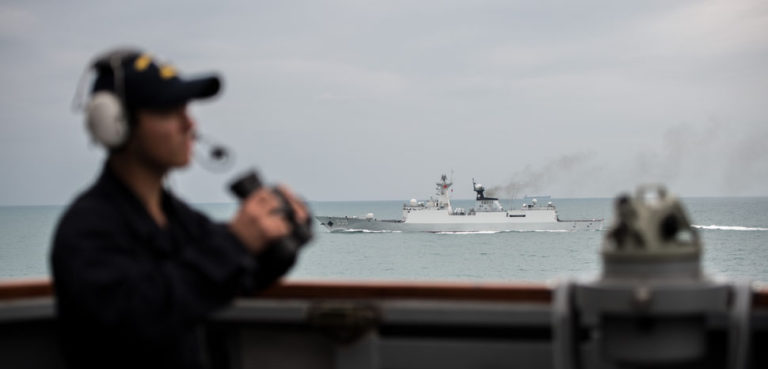
Summary
Rising powers are increasingly vying to establish the new shipping routes which will define global trade over the next century. The largest and highest-profile of these efforts, by a wide margin, is China’s Belt and Road Initiative (BRI), in which Pakistan plays a significant role via the China-Pakistan Economic Corridor (CPEC). Gwadar port on the Arabian sea is the lynchpin of CPEC, and Islamabad and Beijing are hoping to transform this small fishing community into a major transit hub for regional energy and trade flows. But in the process, they will have to overcome security and logistical challenges, along with competition from potential competitors in the neighborhood such as Iran’s Chabahar Port.
Background
The promise of Gwadar port
Gwadar has long been notable only for its geographic features, which a US Geological Survey in 1954 concluded were ideal for the construction of a deep-water port. These natural endowments were ignored for decades due to a lack of commercial application; there was simply nothing worth shipping that wasn’t being served by other ports in the region. The situation changed however with the advent of China’s impressive economic rise and, more recently, Xi Jinping’s Belt and Road Initiative (BRI). Now, Gwadar is under the geopolitical spotlight as the site of Beijing’s next magic trick, where it will duplicate the miracle of Shenzhen and transform a sleepy fishing village into a sprawling economic nerve center.
This is the Gwadar port development of China’s Belt and Road Initiative (BRI); or, more specifically, the $63-billion-dollar China-Pakistan Economic Corridor (CPEC), which is the highest-profile regional plank of BRI. Once operational, the port will serve as the linchpin for extensive new infrastructure networks linking western China to the Arabian Sea via Pakistan.
What’s at stake?
The Gwadar port project is presented as a template for ‘win-win’ cooperation under the Belt and Road Initiative. As for divvying up the winners and losers (or winners and winners?) – only time will tell. But it’s clear from the outset that the project represents very different things to the different parties:
For China, Gwadar port falls under the broader BRI push to export industrial overproduction and keep the domestic economy humming – an imperative made all the more pressing by the US-China trade war. The CPEC corridor, and thus Gwadar port, is of keen interest to Beijing because it holds out the prospect of boosting development in China’s western hinterlands by providing new export markets. Uneven economic development between the eastern and western China has been a perennial worry for the Chinese authorities over the past two decades. Gwadar is also appealing in that it represents an alternative supply route for China’s energy imports, one that bypasses the potential chokepoint of the Strait of Malacca. China’s longstanding “Malacca dilemma” means that the country’s trade is highly dependent on the Strait, with 80% of energy imports alone traversing it en route to China. Finally, Gwadar and CPEC, having become emblematic of the BRI project as a whole, are now of paramount importance to President Xi’s landmark policy platform and, by extension, the credibility of China’s foreign aid model. Put simply, CPEC has reached the point where it’s too big to fail.
For Pakistan, CPEC represents an opportunity for the investment-starved country to attract foreign capital and diversify its economy. The project brings some $1 billion in development aid targeted at some of Pakistan’s most underdeveloped regions. Another key consideration for Islamabad is solving the country’s long-running electricity deficit. As recently as 2017, Pakistan was running an average deficit of 4,000 MW and only 67% of the population had access to electricity. Fast-forward to 2020 and CPEC has succeeded in bringing much-needed electricity generation online – much of it coal – but challenges remain in the form of Pakistan’s aging transmission infrastructure and highly indebted state-owned utilities.
An outline of the Gwadar port project
The approx. 64,000 square meters of Gwadar port lands is being developed by the Chinese Overseas Port Holding Company (COPHC) on a 40-year lease, signed with the Pakistani government in April 2017. The port is undergoing several phases of construction and expansion, and it currently has three multipurpose berths, one service berth, and a roll-on roll-off facility (RO-RO), with a capacity to handle carriers up to 50,000 deadweight tonnage (DWT). There are plans for another three berths in the near future (another multipurpose, one grain, and one oil). And some of the more ambitious long-term estimates are projecting a total of 100 berths by 2045.



